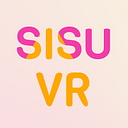Through immersive learning, businesses can open doors to highly engaging training experiences that can have long-lasting benefits on staff productivity and connectedness. However, rolling out your own immersive training program can seem daunting.
Designing your own virtual reality (VR) program is not as difficult as you may think. Here are a few steps to jumpstart the process!
- Set a Clear Purpose
To determine whether VR training is right for you, start with setting your organization’s training goals.
What are your company’s learning objectives? Is there anything notable to address at the moment, or any learning gaps do you need to fill?
To ensure your company knows exactly what you are trying to achieve and why, consider the aforementioned questions to determine your team’s training requirements.
For example, Verizon has implemented VR training to better equip employees to handle customer inquiries. Their main goal was to enable employees to quickly and accurately resolve customer issues.
Getting your executive team on board starts with identifying the issue you are trying to tackle and gauging whether the benefits will be worth the investment. When developing VR training, it is also essential to consider all aspects of planning, delivery, and post-training evaluation to ensure the program is both effective and impactful.
2. Do Research
In-depth research on the subject you wish to train could help determine if VR training is a fit for your company. If you can, enlist the help of a VR training expert(s) in the subject area you will instruct on.
Research could also involve consulting with experts, or reading up on relevant resources.
Once you have identified your goals, start researching how costly this problem is for your company, as well as projected return on investment after you address the issue. For example, check out how these companies integrated VR into their training program.
Finally, survey how your teams learn. Using cutting-edge technology, GE Healthcare has found interactive training to be a successful delivery mechanism for staff.
3. Start Small
You do not need to launch a company-wide program on day dot; rather, start with something small and build upon it. If you are uncertain about the scope you want to commit to, introduce it gradually. Starting small can also help you experiment on what works, and pivot as needed.
A pilot program is a great way to dip your toe in immersive learning waters without having to make a notable commitment.
After rolling out the pilot, you can monitor and evaluate training performance. By assessing program results, you can identify areas requiring improvement. Equipped with valuable performance data, the setup can then be adapted for a full launch.
For instance, Nestlé Purina has tapped into the power of VR for retail shelf planning. Seeing their pilot’s success, the company rolled the program out across different departments. They are even using VR to foster collaboration among remote sales teams.
Even with a limited budget, getting started with VR does not have to be intimidating. Setting goals as well as researching relevant subject area(s) and learners’ needs are key to designing a successful training program. Starting small with a pilot can also help assess if your organizational objectives can be met for a more scalable setup.
